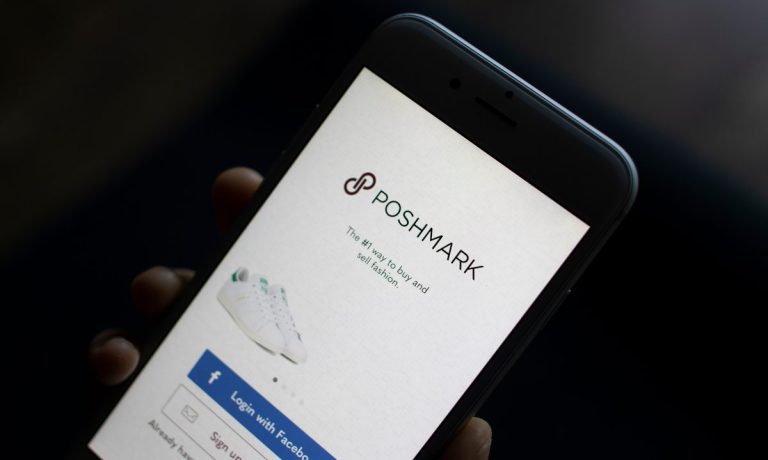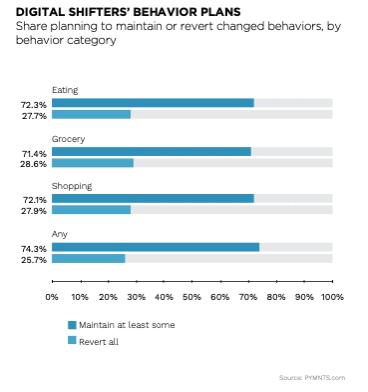Connections With Secondhand Sellers Create ‘Tipping Point’ Between Browsing and Buying

Shopping for secondhand clothing online can be daunting for consumers who want to inspect every item for tears, stains and imperfections a previous owner may have caused, leading to lost sales for sellers and frustrated shoppers.
The key to bridging this gap, according to Tracy Sun, co-founder and senior vice president of seller experience at Poshmark, is to create “that same sense of community and connection” that a person would experience with an in-person sales associate and making the platform more social in nature.
“Connecting with shoppers in meaningful and authentic ways creates the tipping point between browsing and buying while establishing the foundation for repeat business,” she told PYMNTS.
Unlike other resale marketplaces, Poshmark holds little to no inventory, instead acting as a facilitator between the seller who owns the merchandise and the buyer who wants it. Sun said sellers — from casual to boutique — are the “lifeblood” of the platform, which is why investing in tools for them is so crucial. Last week, Poshmark unveiled a clienteling feature to help sellers act more like sales associates and stylists, as well as a new dashboard that provides them with real-time inventory and sales data.
Read more: Poshmark Rolls Out New eCommerce Tools to Give Sellers More Customer Insights
“For the first time, they’re able to create a highly personalized retail experience online at scale,” Sun said. “This is incredibly important because online shopping and social commerce is only growing and here to stay. So, it’s important for our sellers to feel confident in making sales and keeping that sense of community.”
Half of all consumers have increased their digital shopping behaviors since March 2020, according to PYMNTS research, with clothing and accessories among the most affected products — 17% of all consumers are buying more of their apparel online than they did last year. Data also show that 72% of consumers who have shifted their behavior plan to maintain their digital shopping habits.

See more: PYMNTS Pandenomics Study: Many Shifters Prefer Digital Living To The Physical World
“We’re going to continue seeing strong tailwinds drive the future of retail — that’s the shift to online, the shift to social and the shift to secondhand,” Sun said.
Making Shopping Interactive
Sun said Poshmark is also focused on driving traffic from other platforms onto its secondhand marketplace. Earlier this year, Poshmark launched a mini shop within the social media app Snapchat, and Sun said the platform has also seen an increasing trend toward mobile commerce and the use of video tools, which prompted the introduction of Posh Stories last year.
“If anything, the past year and a half has underscored the importance and need for community like never before,” Sun said, adding that 87% of purchases on Poshmark begin with a social interaction.
“The meaningful engagement that happens among Poshers is the connective tissue that binds our 80 million-plus users, and you really can’t get that with traditional retail,” she said.
Social commerce is expected to top $36 billion in the U.S. this year, according to eMarketer, and $45 billion next year, which has led to a flood of social media giants trying to become storefronts where users can discover and buy products. TikTok has partnered with both Square and Shopify to integrate shopping into its platform, for example, while Facebook and Instagram have been rolling out features for months to bolster commerce capabilities.
Related: Social Media Giants Jockey to Attract Brands, Influencers
“Simply put, it’s about making both the selling and shopping experience easier, interactive, intimate, and fun, regardless of the channel,” Sun said.
Continued Growth of Resale
Marcus Shen, chief operating officer of B-Stock, told PYMNTS in an interview last month that the secondhand market has a big opportunity ahead of the holiday season as supply chains remain tangled and the stigma around resold goods continues to dissolve.
“That idea of buying what’s called ‘quality they can count on’ as opposed to stuff that might be ‘one-and-done’ is certainly a big change that we’re seeing in consumer behavior,” Shen said.
See: Secondhand Market Presents ‘Big Opportunity’ for Retailers Ahead of Holidays
The secondhand apparel market is expected to grow 11 times faster than the broader retail clothing sector over the next five years, with the secondhand market reaching $77 billion by 2025.
“The idea of buying something that has been renewed or refurbished that’s readily available and at a price point that is probably better than you’re going to pay from a new retail perspective, that is kind of making the decision easier and easier for all consumers,” Shen said.